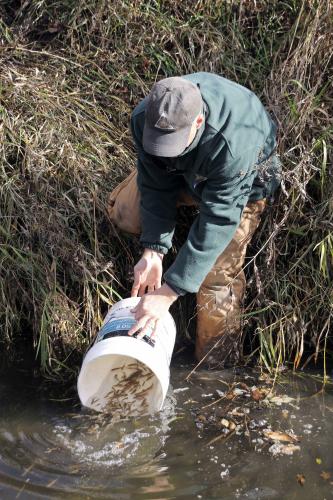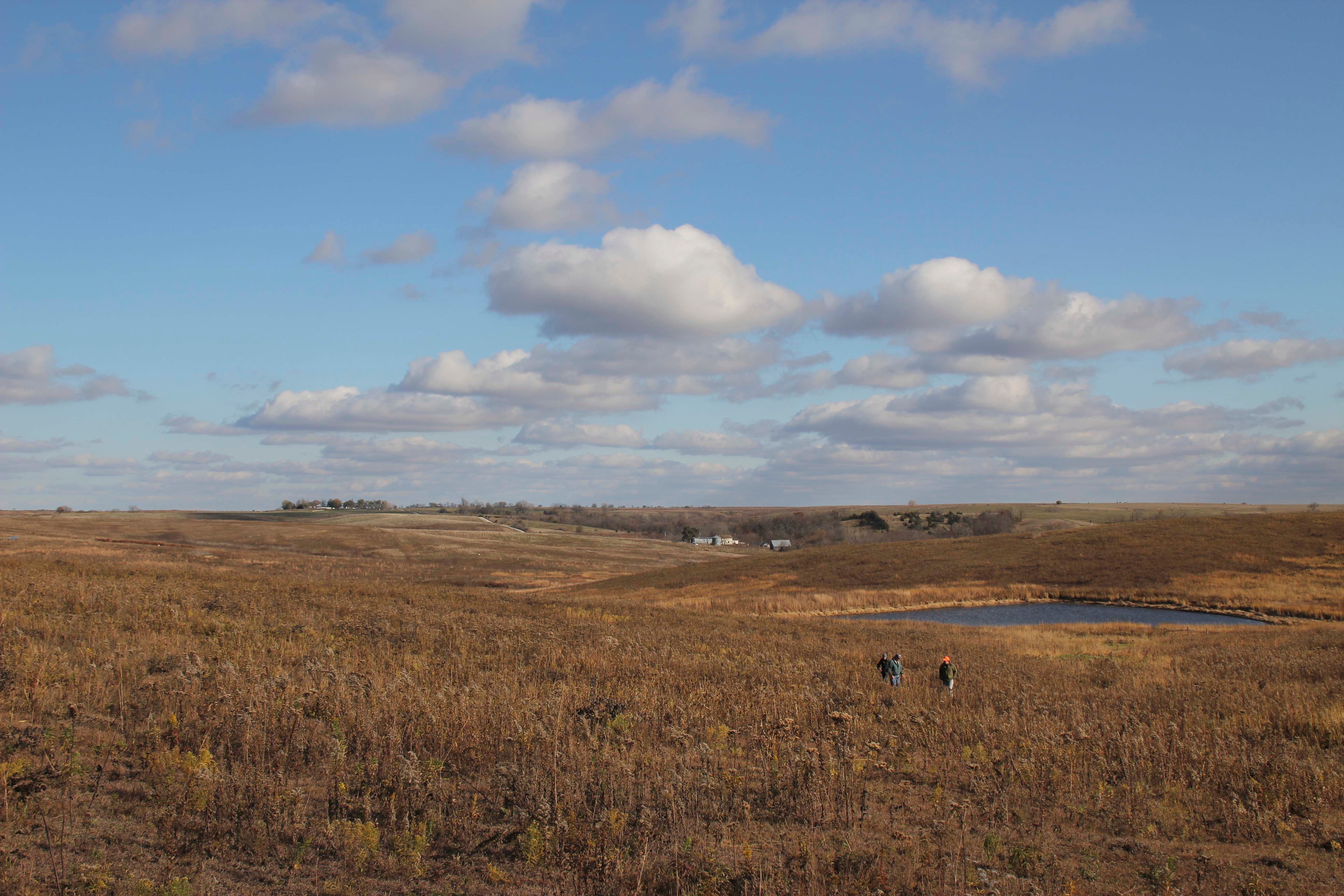
Xplor reconnects kids to nature and helps them find adventure in their own backyard. Free to residents of Missouri.


































Stay in Touch with MDC news, newsletters, events, and manage your subscription

Xplor reconnects kids to nature and helps them find adventure in their own backyard. Free to residents of Missouri.

A monthly publication about conservation in Missouri. Started in 1938, the printed magazine is free to residents of Missouri.






Eagleville, Mo. – Biologists on Wednesday watched with hope as 3,300 hatchery-reared minnows of the endangered Topeka shiner swam away in ponds and a creek in Harrison County in northwest Missouri. A decades-long effort to protect and restore a fish that evolved in prairie streams now has fresh fins in the water.
“Our goal is for them to eventually not be endangered,” said Jerry Wiechman, a fisheries management biologist for the Missouri Department of Conservation (MDC).
MDC fisheries crews and conservation partners on Nov. 6 released the Topeka shiners at Dunn Ranch and at MDC’s Pawnee Prairie Natural Area. Both are in the Grand River Grasslands, a combined public and private prairie restoration effort spanning 70,000 acres in Missouri and Iowa.
Bison in fenced grasslands at Dunn Ranch are an icon for the effort, and so are endangered prairie chickens that use the wildflower-rich native or restored prairie remnants across the countryside on both sides of the state line.
But prairies nurture fish as well as birds, wildlife, wildflowers and native grasses. Creeks born from rainwater on ridges feed rivers. Plants cleanse runoff from heavy rains. Prairies soak up rain and release clear water from seeps and springs into headwaters that feed the big rivers.
Topeka shiners were once common in such waters in prairie states. Their numbers are in sharp decline for reasons biologists don’t fully understand, though they know most native prairie is gone and the landscape is greatly changed by development and agriculture.
MDC for two decades has worked with the U.S. Fish and Wildlife Service on a recovery plan for Topeka shiners because fish are part of a prairie’s natural web of life. The shiner restoration is also a partnership with The Nature Conservancy of Missouri, which owns Dunn Ranch. Todd Sampsell, the Conservancy’s Missouri director, on Wednesday took a turn pouring hatchery-raised shiners from a water-filled cooler into a pond.
“This restores another piece of a functioning prairie ecosystem,” Sampsell said. “We’re thrilled. To us it’s a testament to how a healthy prairie can keep a prairie stream healthy.”
Topeka shiners, silvery and growing up to three-inches long, can survive in creek pools during drought, Wiechman said. But they’ve dwindled to populations in only two streams in Missouri. Topeka shiners are on the state’s endangered species list but also federally endangered due to declines in other states. Those released on Wednesday were raised at the MDC Lost Valley Fish Hatchery at Warsaw. But the parent stock came from a surviving native population in Sugar Creek in Harrison County.
The hatchery-raised shiners are considered a non-essential, experimental population by the U.S. Fish and Wildlife Service. That designation means there will be no restrictions or regulations that affect property owners in areas where they are released. Future plans call for additional Topeka shiner releases until the state has seven watersheds with self-sustaining populations. Those releases will also be non-essential, experimental populations.
Although, there will be future opportunities for property owners to voluntarily participate in grant or cost-share programs that improve water quality and stream corridor habitat, Wiechman said. For example, financial assistance could help farmers develop reliable and clean water sources for cattle away from streams, which could help keep livestock out of channels so they don’t increase turbidity and damage stream beds. Anyone interested in those programs can contact Wiechman at 816-675-2205 or go to mdc.mo.gov.
The shiners released on Wednesday are a vanguard. Biologists hope they reproduce in the ponds to provide Topeka shiners for stocking in other locations. If some fish wash out of the ponds during heavy rains, that will also stock the prairie headwaters. Orangespotted sunfish were also stocked in the ponds, previously cleansed of other fish, as a “spawning associate.” Topeka shiners will lay eggs in an active sunfish nest, and sunfish fanning and guarding the eggs helps the hatch.
Natural life is interconnected between species, land and water. Conservation saves those connections for future generations of people to enjoy.
“It’s our job to protect diversity for all species in Missouri,” Wiechman said. “For Topeka shiners, MDC is being proactive to avoid worse problems for an endangered species.”